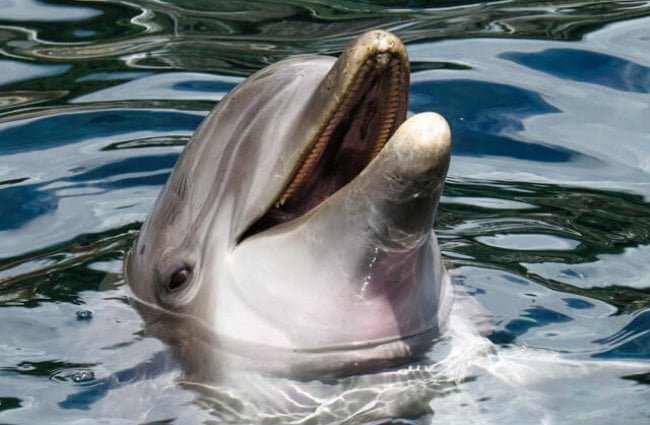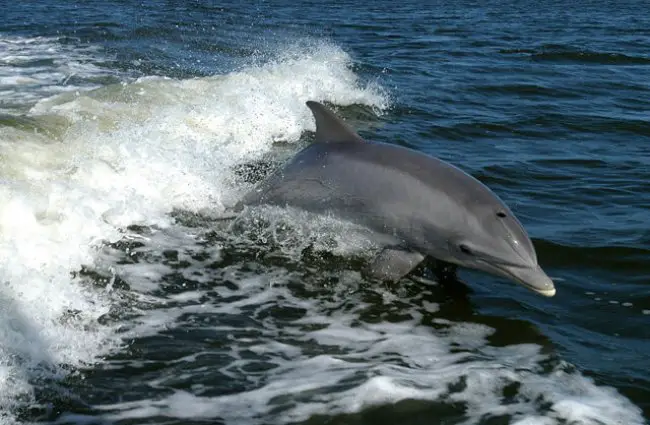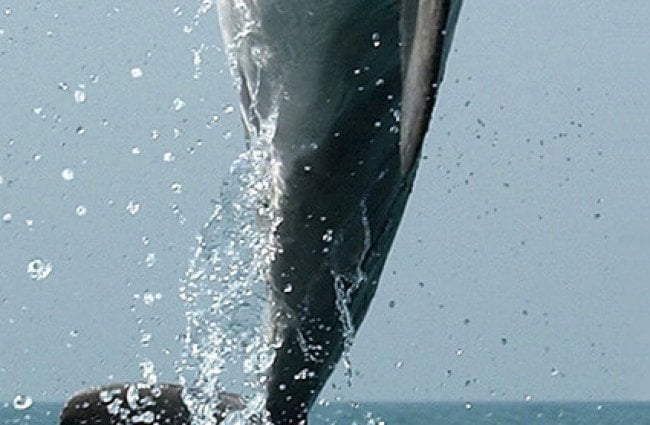The World of Bottlenose Dolphins: Intelligence, Adaptability, and Beyond
Bottlenose dolphins, instantly recognizable by their playful nature and prominent bottlenose snout, are among the most intelligent and charismatic creatures inhabiting our oceans. These marine mammals are not simply beautiful to observe; they play crucial roles in marine ecosystems and hold a special place in human culture. This comprehensive guide explores the fascinating world of bottlenose dolphins, covering their biology, behavior, habitat, and interactions with both the natural world and humanity.

Basic Biology and Physical Characteristics
Bottlenose dolphins, scientifically classified as Tursiops truncatus, are toothed whales belonging to the oceanic dolphin family. They typically range in length from 6 to 13 feet and weigh between 330 and 1430 pounds. Their streamlined bodies are perfectly adapted for swift movement through water, propelled by a powerful tail fluke. Coloration varies depending on geographic location, but generally, they are gray on the dorsal side and lighter on the ventral side. A key characteristic is the melon, a rounded structure on the forehead used for echolocation.
Habitat and Distribution
These adaptable dolphins inhabit temperate and tropical waters worldwide. They are found in coastal waters, bays, lagoons, and even river systems. Different populations exist in the Atlantic, Pacific, and Indian Oceans, and even in certain rivers like the Amazon and Mississippi. Coastal bottlenose dolphins often exhibit site fidelity, remaining in specific areas for extended periods, while offshore populations may travel vast distances. They thrive in diverse habitats, from the warm waters of Florida and the Bahamas to the cooler currents of the Pacific Northwest.

Diet and Hunting Strategies
Bottlenose dolphins are opportunistic feeders, meaning their diet varies depending on availability. Their primary food sources include fish, squid, and crustaceans. They employ a range of sophisticated hunting techniques, often working cooperatively in groups. These strategies include fish whacking, which involves stunning fish with their tails, and mud ringing, which creates a muddy vortex to trap fish. Echolocation is critical for locating prey in murky waters. They are also known to forage near the seafloor, utilizing suction to dislodge invertebrates. A healthy adult bottlenose dolphin can consume up to 15 to 30 pounds of food per day.
Social Structure and Communication
Bottlenose dolphins are highly social animals, living in groups called pods. Pod size can vary considerably, ranging from a few individuals to over 100. Within pods, complex social relationships exist, with individuals forming alliances and hierarchies. Communication is central to their social lives. They utilize a variety of vocalizations, including whistles, clicks, and pulsed calls. Each dolphin develops a unique signature whistle which functions like a name, allowing individuals to identify each other. They also communicate through body language, such as leaping, tail slapping, and jaw clapping. Cooperative behavior, including shared childcare and collective hunting, demonstrates their advanced cognitive abilities.

Reproduction and Life Cycle
Female bottlenose dolphins typically reach sexual maturity between 5 and 12 years of age. Gestation lasts approximately 12 months, resulting in the birth of a single calf. Calves are born tail first and are dependent on their mothers for several years. Mothers provide extensive care, nursing their calves for up to 18 months and teaching them essential survival skills. The mother‑calf bond is exceptionally strong. Bottlenose dolphins have a relatively long lifespan, with some individuals living for over 60 years. Breeding typically occurs in warmer months, and calves are often born during spring or early summer.
Ecological Role and Interactions with Other Species
As apex predators, bottlenose dolphins play a crucial role in maintaining the health of marine ecosystems. They help regulate populations of fish and squid, preventing any single species from becoming dominant. They also interact with other marine animals, sometimes cooperating with fishermen to herd fish, and occasionally engaging in playful behavior with other dolphin species. However, interactions can also be competitive, particularly for resources. They are often found near seabird colonies, benefiting from the fish stirred up by the birds’ foraging activities.

Bottlenose Dolphins and Humans
Throughout history, bottlenose dolphins have held a special place in human culture, appearing in mythology, art, and folklore. In recent times, interactions between humans and dolphins have become increasingly common, particularly through ecotourism and captive breeding programs. While dolphin shows can be entertaining, concerns about animal welfare have led to a growing movement to phase out captive dolphin displays. It is important to observe dolphins in the wild responsibly, maintaining a safe distance and avoiding any activities that might disturb their natural behavior. Unfortunately, they also face threats from human activities, including habitat destruction, pollution, entanglement in fishing gear, and climate change.
Conservation Status and Threats
The conservation status of bottlenose dolphins varies depending on the population. Some populations are considered stable, while others are classified as endangered or vulnerable. Major threats include habitat loss due to coastal development, pollution from agricultural runoff, industrial waste, entanglement in fishing nets, and increasing ocean temperatures. Addressing these threats requires international cooperation and a commitment to sustainable practices. Protecting critical habitats, reducing pollution, and promoting responsible fishing practices are essential for ensuring the long-term survival of these remarkable creatures.

Advanced Insights for Zoologists and Researchers
Echolocation and Cognitive Abilities
Bottlenose dolphin echolocation is exceptional. They emit clicks and analyze the returning echoes to create a detailed acoustic image of their surroundings. Recent research suggests their cognitive abilities are on par with those of great apes, exhibiting self‑awareness, problem‑solving skills, and the capacity for complex communication. Studies focusing on mirror self‑recognition and tool use continue to reveal their impressive intelligence.
Genetic Diversity and Population Structure
Understanding the genetic diversity within and between bottlenose dolphin populations is crucial for effective conservation efforts. Genetic studies reveal distinct populations with varying levels of genetic exchange. This information helps identify populations at risk and prioritize conservation resources.
Behavioral Ecology and Foraging Strategies
In-depth studies of bottlenose dolphin behavior reveal intricate foraging strategies and social dynamics. Researchers employ tagging technologies and underwater video to track their movements, monitor their prey selection, and analyze their social interactions. This research informs our understanding of their ecological role and provides insights into their adaptation to changing environmental conditions.
Encountering Bottlenose Dolphins in the Wild: A Guide
If you are fortunate enough to encounter bottlenose dolphins in the wild, observe these guidelines:
- Maintain a safe distance.
- Avoid making sudden movements or loud noises.
- Do not attempt to approach or touch the dolphins.
- Refrain from feeding the dolphins.
- Report any distressed or entangled animals to local authorities.
Caring for Bottlenose Dolphins in Captivity: Zookeeper Considerations
Caring for bottlenose dolphins in captivity requires specialized knowledge and dedication:
- Provide a large and stimulating environment.
- Offer a varied and nutritious diet.
- Implement enrichment activities to promote physical and mental well‑being.
- Monitor their health closely and provide prompt veterinary care.
- Focus on positive reinforcement training techniques.
Bottlenose dolphins are truly remarkable animals, deserving of our respect and protection. By learning more about their biology, behavior, and the threats they face, we can contribute to their conservation and ensure their survival for generations to come.

![Red Angus Closeup of a beautiful Red Angus cowPhoto by: U.S. Department of Agriculture [pubic domain]https://creativecommons.org/licenses/by/2.0/](https://animals.net/wp-content/uploads/2020/03/Red-Angus-4-238x178.jpg)




![Red Angus Closeup of a beautiful Red Angus cowPhoto by: U.S. Department of Agriculture [pubic domain]https://creativecommons.org/licenses/by/2.0/](https://animals.net/wp-content/uploads/2020/03/Red-Angus-4-100x75.jpg)

